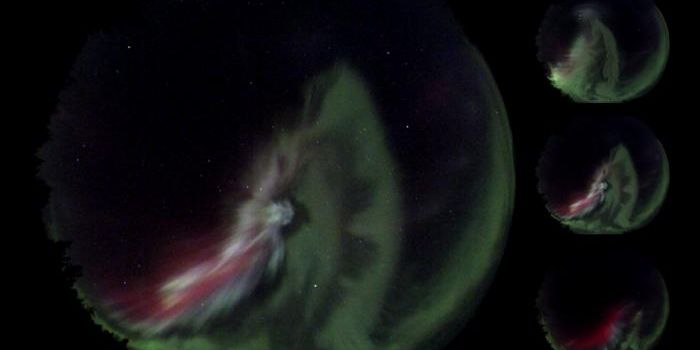Cancer Therapy Agents Inspired by Solar Technology
In a recent study, a group of biomedical researchers at Michigan State University developed a new platform for tweaking light-activated dyes that can enable diagnostic imaging, image-guided surgery, and site-specific photodynamic treatment. Their idea borrowed a mechanism from a seemingly unrelated field — solar energy.
Photodynamic therapy (PDT) relies on photosensitizing agents and light of specific wavelengths to produce reactive oxygen molecule which triggers cell death. It has a proven track record in treating acne. Scientists have achieved some success in using PDT in topical cancers. Still, due to the limit of light penetration, its effectiveness in killing tumor tissues that are deeply embedded in the human body need improvement.
In the current study, two of the senior researchers Sophia and Richard Lunt, an assistant professor in Biochemistry and Molecular Biology and a professor in Chemical Engineering and Materials Science, combined their knowledge and expertise in two separate fields and delivered a home run — a brand new method of cancer diagnosis and treatment.
Richard Lunt brought his experience working with photovoltaics, specifically the cyanine-based organic salts, into this research. These photosensitive compounds are known for their photovoltaic effect, which is the generation of voltage within the material upon exposure to light. The same phenomenon underpins the functional mechanism of solar power panels.
The Photoelectric Effect (OpenMind)
In a previous study, Richard Lunt's team demonstrated that the coupling of a handful of novel anions with a near-infrared (NIR)-sensitive cation manipulation of the electronics of photoactive molecules independently from their optical properties. In the current study, the research group used a similar principle: they explored the pairing of anions and cations, in order to find ways to control cytotoxicity and phototoxicity of the fluorescent compounds independently.
To function as an effective drug for cancer therapy, a PDT fluorescent dye needs to be phototoxic but not cytotoxic, so that it will only deliver a lethal blow to cancerous tissues when distributed to a proper location and given light exposure. But finding the sweet spot between the two properties requires a delicate balancing act.
|
|
|
|
|---|---|---|
| iodide (I−), hexafluoroantimonate (SbF6−), hexafluorophosphate (PF6−), o-carborane (CB−) | tetrakis(4-fluorophenyl)borate (FPhB−), cobalticarborane (CoCB−) | tetrakis(pentafluorophenyl)borate (TPFB−), tetrakis[3,5-bis(trifluoro methyl)phenyl]borate (TFM−), tris(tetrachloro-1,2-benzene diolato) phosphate(V) (TRIS−) |
The pairing of counterions that showed an arrange of different toxicity profile
The Michigan State group achieved this by pairing the NIR-absorbing cyanide cations with various counterions. To assess their cytotoxic properties, they treated human lung carcinoma and metastatic human melanoma cell lines with these dyes. Counterion pairings with small hard anions showed high cytotoxicity at low concentrations, whereas the pairings with bulkier, halogenated anions can remain nontoxic at much higher concentrations.
Among all test candidates, they also found one that actually hit the sweet spot: an intermediate group of anion pairings exhibited high phototoxicity but negligible cytotoxicity.
The researchers hope that their way of exploring cytotoxicity and phototoxicity of fluorescent organic salts would allow for the development of more effective PDT agents for cancer treatment.
This research is published in the journal Scientific Reports.
Source: Medical Express









